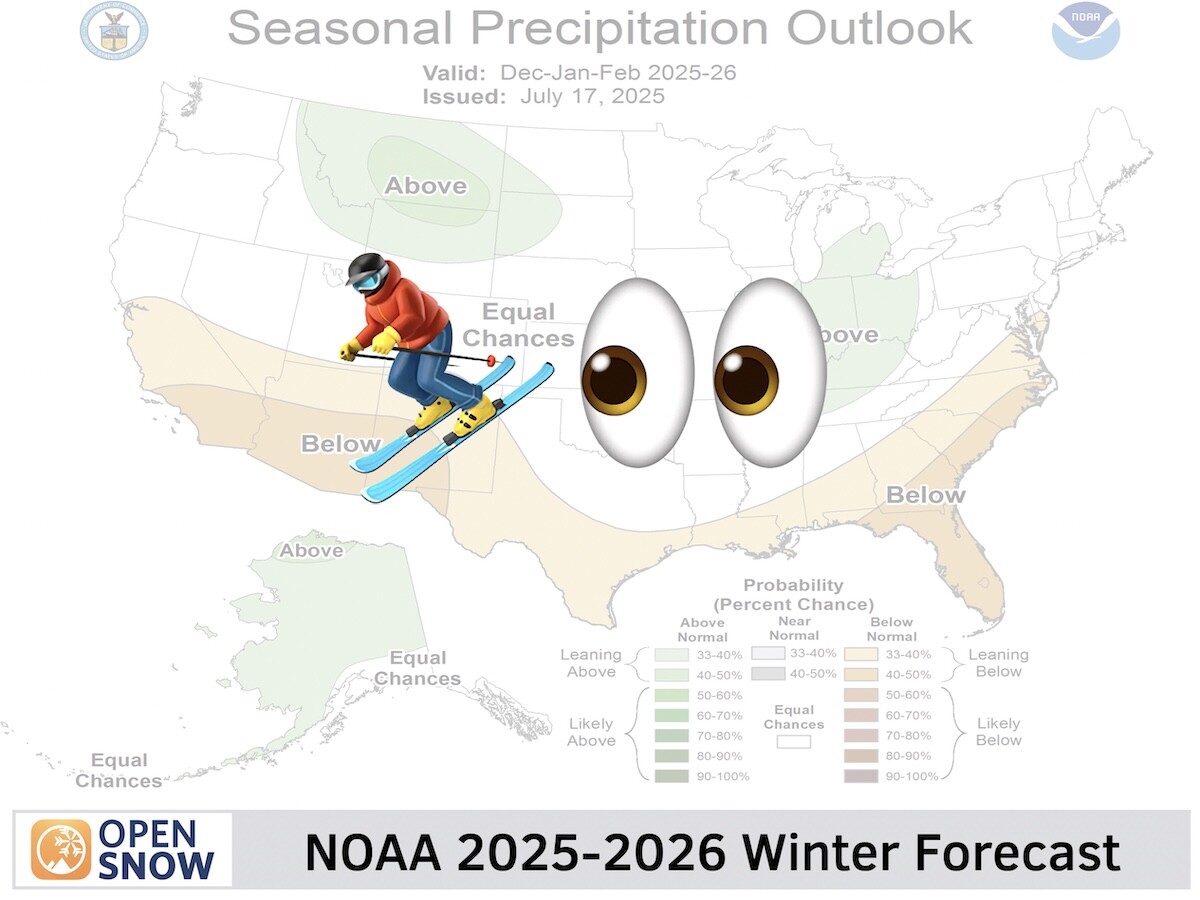News

By Luke Stone, Forecaster Updated 7 months ago December 27, 2024
Ensemble vs. Deterministic Weather Models
We use a variety of tools and techniques to forecast weather and predict atmospheric conditions. Numerical weather prediction models are one of the most crucial tools available. These models can be broadly categorized into two types: deterministic and ensemble. Both play pivotal roles in forecasting, but they serve different purposes and have distinct advantages and limitations.
Deterministic Weather Models
Deterministic models provide a single forecast for a given set of initial conditions, for a specific location and time. These models are essentially a "best guess" based on the data input and the equations used in the model. For example, below is the deterministic snowfall forecast for the next five days, which provides a snow total for every point on the map.

These models are commonly used for short to medium-range forecasts (up to five days), and provide specific predictions for variables like temperature, precipitation, wind speed, and direction for a particular location and time.
Deterministic models can have high spatial and temporal resolution, allowing for detailed forecasts. Spatial and temporal resolution refers to the level of detail and precision in data representation over space and time.
Spatial Resolution refers to the size of the grid cells used in the weather model. A model with a smaller grid size (e.g., 1 km x 1 km) has a higher spatial resolution than one with a larger grid size (e.g., 10 km x 10 km), and this allows for a more detailed representation of weather features.
Temporal Resolution refers to how often the weather model produces a forecast. For example, a model with a temporal resolution of six hours provides forecast updates every six hours. The higher temporal resolution allows for more frequent updates, with some models updating hourly or even every fifteen minutes. Below is a high-resolution deterministic snowfall map that issues new forecasts every hour.

Higher resolution models, with smaller grid sizes and more frequent forecasts, capture finer details as well as weather that changes on shorter time scales and can produce more accurate forecasts overall.
Since they provide only one outcome, however, deterministic models do not account for the inherent uncertainty in the atmosphere. If the initial conditions the models use are slightly off, the forecast can be significantly inaccurate, and this problem becomes more pronounced in the long range.
Ensemble Weather Models
Ensemble models run multiple simulations from slightly varied initial conditions or using different model physics. This approach acknowledges the uncertainty in initial conditions and provides a range of possible outcomes.
Ensemble models are valuable for medium to long-range forecasts (five to fifteen days) and are used to assess the confidence in a forecast by looking at the agreement among ensemble members.
By running multiple simulations, ensemble models can provide probabilistic forecasts. If, for instance, 80% of the ensemble members predict rain, there's a higher confidence in a rainy forecast than relying solely on a single forecast from a deterministic model. Below you can see an ensemble forecast for the airport in Aspen.

On the top half of the figure is the snowfall forecast for each individual ensemble member. The mean of all the ensemble members is shown on the bottom half.
Another example of an ensemble forecast is shown below. Each blue line represents a snow forecast for an individual member of two different ensemble models. The spread of the member snowfall forecasts indicates the uncertainty in the forecast.

Ensembles can also highlight extreme weather events as well, even if they are low probability. If one or two ensemble members predict a severe storm, it can serve as an early warning.
Typically, individual ensemble members are not as high-resolution as deterministic models. Running multiple simulations leads to significant costs associated with higher computing power requirements, lengthy time periods to run the simulations, and large amounts of data that must be stored and processed. Below you can see an ensemble snowfall forecast for the next five days, at a lower resolution.

The diagram above addresses some of the differences between deterministic and ensemble models. The deterministic model is shown in red, with one set of initial conditions yielding one specific result. With the ensemble members, shown in blue, you can see each has a different set of initial conditions and leads to a range of results that become more varied over time. The results of all the ensemble members produce a range of results that represent the uncertainty in the forecast.
Deterministic vs. Ensemble: Practical Example #1
Imagine you're planning to chase a storm the models are showing for next week, ten days out. The deterministic model predicts twelve inches of snow at your favorite resort. However, an ensemble model shows that 80% of its members predict between three to six inches of snow, while 20% predict ten to fourteen inches. With this information, you can better assess the chance of a large versus smaller storm.
Below you can see an example of this. The deterministic model shows a large area of 8 - 16 in of snow ten days from now.

However, if you look at the ensemble model, with the average of all members shown here, you can see just an inch or two is forecasted.

Deterministic vs. Ensemble: Practical Example #2
Imagine you have a trip planned to Colorado in ten days, and you’re curious about what the weather will be like. In order to determine if the weather on your trip will be dry or stormy, we typically look at the atmospheric pressure in the mid-levels of the atmosphere.
We look at atmospheric pressure rather than precipitation because the weather models can predict this parameter more accurately. Parameters like air pressure are easier for weather models to predict for several reasons.
First, changes in air pressure are typically associated with larger-scale atmospheric features, such as high and low-pressure systems. These systems evolve over broader spatial and temporal scales, making them more predictable. Precipitation processes occur on smaller scales and can be influenced by local factors, making them harder to predict accurately.
The physical processes governing air pressure changes are relatively well-understood and can be represented with good accuracy in models. Precipitation involves complex microphysical processes, and capturing these processes accurately in models is challenging.
Further, pressure forecasts, being tied to larger-scale systems, are somewhat less sensitive to minor discrepancies in initial conditions. Precipitation forecasts, on the other hand, are highly sensitive to the initial conditions, with small errors in the initial state leading to significant discrepancies in precipitation forecasts.
The larger-scale and well-understood nature of air pressure changes makes them generally more predictable than the complex, small-scale processes associated with precipitation.
The deterministic model might predict a weak area of low pressure over the Rockies during your trip, indicating the possibility of a storm. For the same time period, an ensemble model might show that 70% of its members predict high pressure over the region, while only 30% show low pressure. With this information, you have a better understanding of the likelihood of dry versus stormy weather.
An example of this is shown below. The deterministic model shows an area of low pressure off the coast of British Columbia. This would bring unsettled and stormy weather to the coast.

However, if you look at the ensemble model, with the average of all members shown here, you can see an area of high pressure in the area. This would bring

Deterministic and ensemble models are both vital to weather forecasting. While deterministic models provide a single forecast for a specific location, ensemble models provide a more broad perspective by accounting for inherent model uncertainty. Utilizing both, we can provide more accurate and comprehensive forecasts.
Luke Stone
Forecaster, OpenSnow
About The Author




